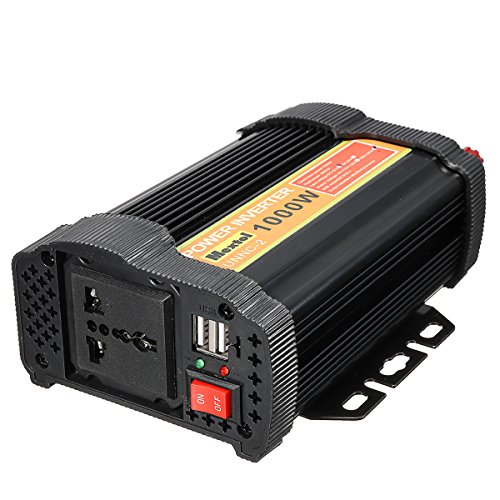
Choosing a power inverter is not an easy task. You need to consider a lot of things before you buy one. That’s why we are going to help you with this matter. Today’s topic is how to choose the best power inverter.
Understand your power requirement:
One of the key factors that you should know before buying an inverter is your power requirement. To put it simply all the electronics like fan, light, television, CFL, etc that you want to run at the time of power failure. The power requirement is the addition of total power consumption by different electronics.
For example, suppose you want to run 2 fans, 1 tube light, and one CFL during the power failure. Their power consumption will be,
1 fan – 70 watts
1 tube light – 60 watts
1 CFL – 25 watts
So your total power consumption is 225 watts.

Find the VA rating of the inverter:
VA stands for volt-ampere. It is the voltage that inverter supplies to the electronics connected to the inverter.
If an inverter operates with 100% efficiency then the power that the inverter supplies to the electronics is the same as live electricity in your home. But in case you didn’t know 100% efficiency on the inverter is non-existent. Most inverter offers 60-80% efficiency. 80% is still a lot.
This efficiency is also called power factor. It is the ratio of power required by appliances and power delivered by inverter. Power factor of most inverter ranges from 0.6 to 0.8.
Hence Power supplied (or VA rating of the inverter) = Power requirement ( power consumed by equipment in watts) / Power factor( efficiency).
The average value of power inverter is considered i.e. 0.7.
So power of inverter (VA) = 545/0.7 = 765 VA.
Know the battery type:
Battery is the main component of an inverter system. If the battery is not good then your inverter will turn out to be bad. The performance and longevity depends on the battery. The most commonly asked question is how many hours of backup the inverter can provide. It can be simply answered by the battery capacity. Just like a mobile phone where more mah means more battery backup, in inverter more Ah means more backup.
You will find 100 Ah, 150Ah, different sizes of battery in an inverter. How do you decide which one you need? To find this you have to do a reverse calculation. Suppose the battery provides 3 hours of backup.
Batter capacity = power requirement * backup hours / battery voltage.
Battery capacity = 535×3/12 = 133Ah.
So, if you buy a 150 Ah battery-powered inverter you will do just fine.
If you want to run 2 fans, 1 tube light, and one CFL you are going to need an 800VA inverter with 150 Ah battery.
If you understand this simple calculation you can easily survive from getting scammed by inverter dealers.

Peak/surge, and typical power:
An inverter needs to provide power in 2 stages peak/surge and typical power.
- Surge: Surge is the maximum power that an inverter can supply. Usually for a small amount of time. A lot of electronics like electric motors need a higher surge of power to startup.
- Typical: What inverter typically supplies. It’s the continuous rating. Normally it runs much lower power than surge. It supplies the amount that the motor needs after startup or to run your microwave etc.
- Average: It is much lesser than your surge and typical mode. Usually, this does not play any kind of role in choosing an inventer. For example, if you run a TV and a motor pump for 20 minutes in one hour you will be needing around 300watts of power. Even though typically motors needs around 2000watts to run. Average power only comes in handy while choosing the battery capacity of an inverter.
All these points should have made clear by now how to choose the best inverter. It’s not that hard if you research and gathered enough information. If you don’t want to get scammed by dealers simply do the math by following the formula above and you will do just fine.





